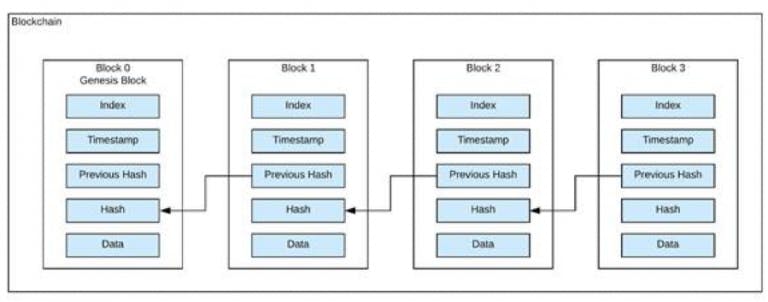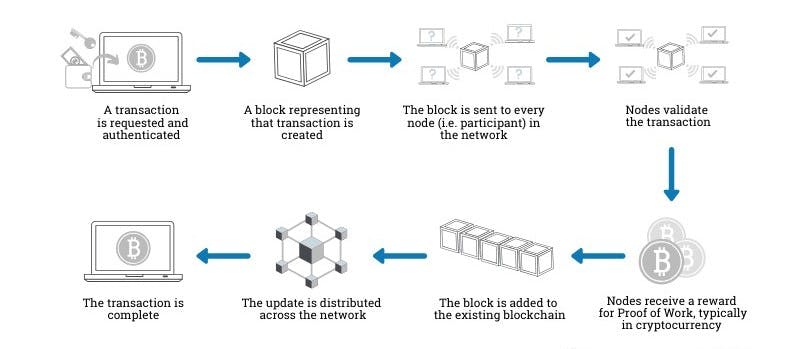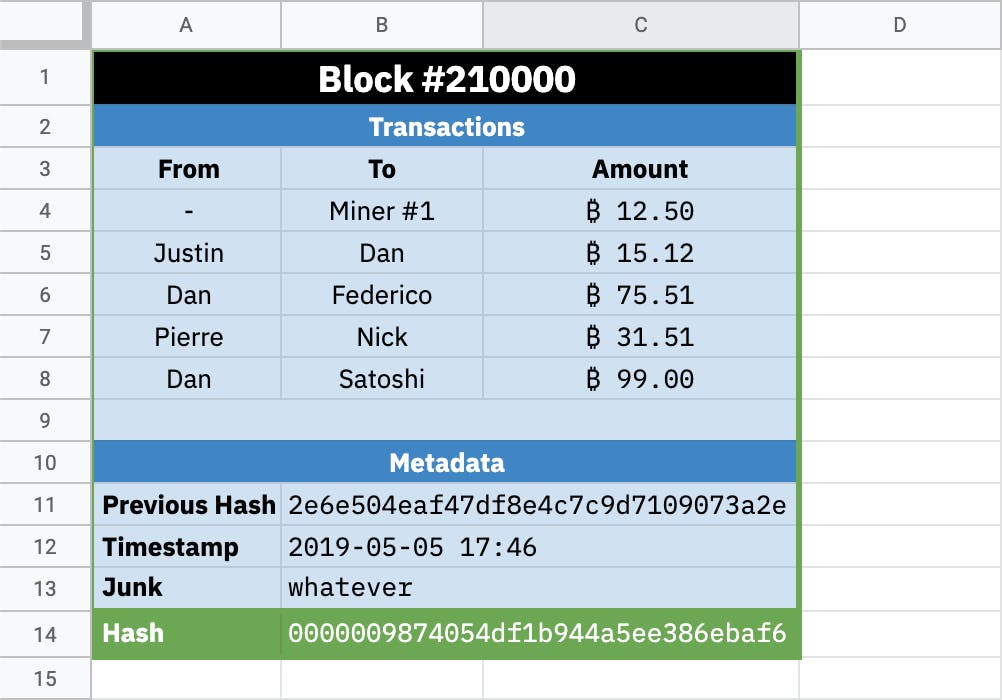Blockchain Technology And Its Role In Web3
How the blockchain really works
Blockchain is an innovative technology that provides solutions to numerous problems of centralization. But how exactly does it work and what role does it play in web 3.0?? This article aims to simplify the concepts of Blockchain and why it's the best technology for the new web.
The Blockchain Technology
Blockchain is a digital record that stores transactional information, secured and distributed across network of connected computers.
What does this really mean? Before we dive in deeper, let's take a look at the properties that make up a blockchain.
Key properties of a blockchain
Blocks: Records that store details of transactions, often containing a hash and the hash of a previous block.
Hash: A secured key, unique to a particular block, and used to access a Block's content.
**Transaction: **Information collected into the blockchain.
Node: Participant in a network.
**Network: **A group of connected computers.
Smart contracts: Logical programs that execute when certain conditions are met. Often used for authentication and authorization.
How The Blockchain Works

An illustration of how the block chain works
Having known about the different properties of a Blockchain, Let's take a closer look at how they all work together.
Transactions made in a blockchain, are stored in records called Blocks. These blocks have certain storage capacities, and when filled are closed and linked through the hash to the previous block to form a chain. The hash of the previous block is linked (copied) to the new block to enhance transparency and prevent data loss.
Before a block is added to the blockchain, it is sent to every node (participants in a network) for verification. The nodes validate the transaction. The transaction gets added to the blockchain, and updated across each network.

What a blockchain looks like
Let's say the google sheet is a decentralized ledger (Our Blockchain)
Each page on the sheet represents a Block.
A unique cryptographic key (a hash) is generated when a record is added to the page.
A new page is created when the first is filled, and the hash of the previous block is copied into the new page, which forms a chain.
The blockchain (the sheet), is shared among participants (contributors to the file).
Everyone gets notified when a new entry is added to the file.

Blockchain illustration using spreadsheet
The Role of Blockchain in web3.0
Web3.0 is the new evolution of the web, known as the decentralized web. It is built on technologies such as Blockchain, IOT and AI, with Blockchain being its core technology.
Web3.0 is designed to solve the problems of centralization and control of users' data.
How to achieve this?
Blockchain is used as the core technology for data storage, to eliminate the need for centralization in web 3.0.
What difference does this make you may ask?
Let's take a look at a supposed centralized web (without the blockchain)
Jeff and his friends are saving up to buy a gaming console at the end of the month. They all save $10 each day in a box but they need a way to record these transactions. Jeff has a computer, so he volunteers to keep the record using his Microsoft Excel program.
He records the daily transaction for everyone, but fills up to the end of the month for himself. He doesn't add to the box anymore, but would always update his records in the sheet. No one else except Jeff has an access to the sheet. His friends can only see the record at the end of the month so yes, Jeff can keep doing whatever he likes with it.
Problem with this?
Need for intermediary: Everyone had to go through Jeff to record their transactions.
Lack of transparency: Jeff could manipulate the sheet because no one else had access to it.
Time Consuming: Jeff had to record in everyone's data one after the other.
Cost: Jeff could ask for charges to compensate for his time and services.
Data Loss: If Jeff's Computer got lost or compromised, then all the transaction information would be lost.
What if the web was Decentralized??
Jeff and his friends decide to keep track of their daily transactions. Everyone installs the Google Sheet app. Jeff creates a document for the transactions, adds his friends as editors, and shares the link. Everyone has access to the file, and can see every transaction. Also, everyone gets notified when a transaction is made.
Benefit?
Decentralization: Eliminating the need for an intermediary. Everyone has direct access to the sheet.
Transparency: Everyone can keep track of every transaction.
Saves time: Everyone can document transactions by themselves.
Reduced cost: No need to pay for extra service charges.
Data loss: Everyone has a copy of the sheet. So there's no room for data loss.
And yes! That's how powerful a Decentralized web can be and what technology can provide us with such solution other than the Blockchain?😀
Other industries where Blockchain Technology is used to enhance transperancy and data-security includes: Cryptocurrency, Government, Finance, Health, Education etc.
I hope you had fun reading this. Please let me know if you learnt a thing or two😊
Image resources
euromoney.com/learning/blockchain-explained..
spheregen.com/blockchain-technology-basics
medium.com/@vanflymen/learn-blockchains-usi..
#thw-web3
